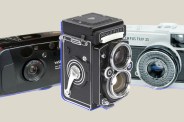Like any other expensive consumer electronic, buying a camera can be intimidating. There are so many choices, specs to consider, and ever accessories. It can feel like if you don’t thread every needle perfectly you’re going to end up with something you don’t love, or worse: something you don’t use.
Luckily, we’ve made every mistake in the book when it comes to buying cameras and have distilled them in to seven key mistakes (and how to avoid them).
Don’t Buy From The Grey Market
Common in the watches as well as cameras, the “Grey Market” is a blanket term for products that are legitimate, but intended for another country’s domestic market. For example, a camera destined for the Chinese market being sold in the USA.
Generally camera makers hate the grey market, because it messes with their pricing. They hate it so much that companies like Canon and Nikon will refuse to cover them under warranty or (in the case of Nikon) refuse to work on them at all.
These deals show up all the time on places like Ebay and Amazon, and less reputable camera sellers and are usually spotted by the fact that the seller will be the one offering the warranty, not the camera maker. It’s almost always not worth the savings and you’re just setting yourself up for a hassle (and lower resale values). To avoid it, just buy from official dealers found on the camera-maker’s website.







